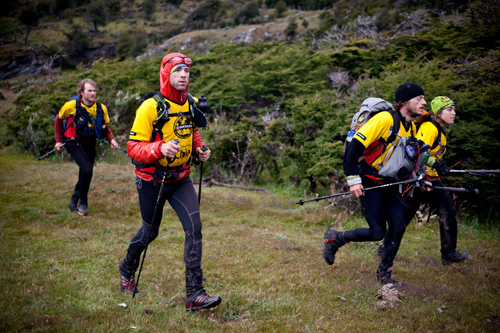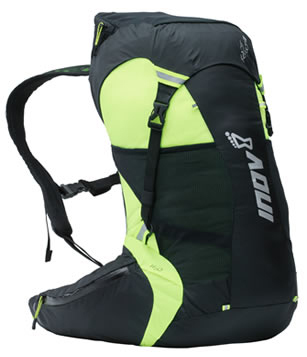It took almost a full week of human-powered effort — 6 daysm 3 hours, and 31 minutes, to be exact — to traverse the entirety of Tierra del Fuego in Chile’s Patagonia region. But last month, mountain bikes, trekking gear, kayaks, ropes, and a zipline over a river afforded passage on the crazy trip that was the 2010 Wenger Patagonian Expedition Race. Like all the racers that finished, the members of Team GearJunkie.com — which included myself and three companions, all racing together the entire time — traveled a total of 344 miles in the event. We carried sleeping bags, tents, survival gear, and food. Resupply drops every couple of days kept our loads hovering below 25 pounds for most of the race.

photo by T.C. Worley
But the journey to the Wenger Patagonian Expedition Race had truly started a few days before. Indeed, it took a van loaded with gear to get from my house to the airport. Then in the terminal, I juggled a cart stacked with three rolling duffel bags, a carry-on suitcase, and a daypack to wear on the airplane (and surreptitiously stuff down by my feet on the flight to Chile). And did I mention the hard-side plastic bike case with my Giant Anthem X1 inside? Delta Air Lines charged me $300 — each way! — just to get the mountain bike from Minneapolis to Tierra del Fuego.
Thus was my gear nightmare en route to last month’s race. The good news is that we finished the race, nabbing a fourth-place prize. The gear, from shell jackets to ultra-light tents, was a crucial element for every team. There was a mandatory gear list provided by the race directors, including headlamps, first aid, gloves, a whistle, and a couple dozen other crucial items. But each team came with its own customized kit, a meticulous collection of equipment to support, protect, warm, feed, and speed movement on a race course dubbed “the toughest and wildest on Earth.”

photo by T.C. Worley
I tested most of my gear for months before heading south to Chile. But on the course, where it rained and snowed — and where wind whipped to 80 miles per hour one day — some of the gear reached its breaking point. For example, after tromping in swamps, with wet legs and feet on and off for three days straight, the Velcro on the top of my Mountain Hardwear Trail Gaiters would not hold shut. It pealed back an inch or two to open the gaiter and expose my shin. Another problem came with my poles. In total, we trekked, stumbled and ran more than 140 miles over the week. My trekking poles, the Carbonlite AERGON Antishock Poles from Leki, loosened after miles on the move. Twice a basket on one of the telescoping poles snagged in deep mud and pulled a section out too far. It bent and nearly broke. But it was fixable with some careful field repair and a retightening to hold the section back solid in place.










